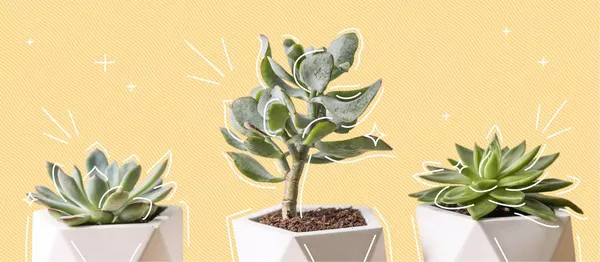Succulents, with their captivating array of shapes and colors, are not only prized for their unique foliage but also for their stunning flowers. While the primary allure of succulents often lies in their ability to thrive in arid conditions, many varieties surprise enthusiasts with vibrant and intricate blooms.
Aloe Vera (Aloe barbadensis miller)
Aloe Vera, a well-known succulent, is celebrated for its medicinal properties and soothing gel. Beyond its practical uses, Aloe Vera produces striking tubular flowers that emerge from tall, sturdy stalks. The flowers vary in color, ranging from shades of orange and red to vibrant yellow. Aloe Vera typically blooms during late winter and early spring, providing a burst of color during the cooler months. To encourage flowering, ensure your Aloe Vera receives bright, indirect sunlight and well-draining soil.
Echeveria spp.
Echeverias, with their rosette-shaped foliage, are among the most popular succulents for both indoor and outdoor gardens. These charming plants also surprise admirers with their elegant flowers. The flower stalks emerge from the center of the rosette, producing bell-shaped blooms in shades of pink, red, orange, or yellow. Echeverias typically bloom in late spring or early summer, and their flowering can be influenced by factors such as sunlight, temperature, and soil conditions.
Sempervivum spp. (Hens and Chicks)
Hens and Chicks, members of the Sempervivum genus, are well-loved for their captivating growth patterns and ability to thrive in various climates. These hardy succulents often produce tall, slender stems topped with clusters of star-shaped flowers. The flowers can range in color from white to shades of pink and red. Hens and Chicks are known for their resilience, and their flowering is influenced by factors like the age of the plant, sunlight exposure, and the overall health of the succulent.
Kalanchoe blossfeldiana
Kalanchoe blossfeldiana, commonly known as the Flaming Katy or Christmas Kalanchoe, is a popular flowering succulent. Known for its vibrant and long-lasting blooms, this succulent produces clusters of small, bell-shaped flowers in hues of red, pink, orange, and yellow. The flowering of Kalanchoe blossfeldiana is often triggered by shorter daylight periods, making it a delightful addition to indoor spaces during the winter months. Provide bright light and allow the soil to dry out between watering to encourage prolific flowering.
Haworthiopsis attenuata (Zebra Plant)
The Zebra Plant, belonging to the Haworthiopsis attenuata species, is recognized for its striking zebra-like patterns on its leaves. While the foliage steals the spotlight, Zebra Plants also exhibit delicate flowers. The flower spikes emerge from the center of the rosette, producing small, tubular flowers with green or white hues. While Zebra Plants are not known for prolific flowering, they occasionally surprise growers with their charming blooms. Provide well-draining soil and moderate sunlight to support their overall health and occasional flowering.
Crassula ovata (Jade Plant)
The Jade Plant, a symbol of prosperity and good luck, is a popular succulent known for its thick, fleshy leaves. While its main attraction is the lush foliage, Jade Plants can also produce clusters of star-shaped flowers. The flowers, which appear in late fall or early winter, are usually white or pale pink. To encourage flowering, provide bright but indirect sunlight, allow the soil to dry out between watering, and maintain a well-ventilated environment. Flowering in Jade Plants is often associated with maturity, so older plants are more likely to bloom.
Sedum spp.
Sedums, commonly known as Stonecrops, encompass a vast and diverse group of succulents that vary in size, shape, and color. Many sedum species surprise growers with their beautiful, star-shaped flowers that appear in late summer and early fall. The flower clusters can range from shades of pink and red to vibrant purples and whites. Sedums are adaptable and generally low-maintenance, making them a delightful choice for both garden beds and container gardens. To promote flowering, provide ample sunlight and well-draining soil.
Aeonium spp.
Aeoniums, with their striking rosettes and sometimes dramatic growth habits, are succulents that often produce remarkable flower spikes. The flowers can vary depending on the Aeonium species, ranging from small, star-shaped blooms to larger, conical flower heads. Aeoniums typically bloom in late winter to early spring. While flowering is a natural part of their life cycle, the process can be influenced by factors such as sunlight exposure, temperature, and the overall health of the plant.
Sempervivum arachnoideum (Cobweb Houselek)
Cobweb Houseleek, a variety of Sempervivum, is distinctive for its cobweb-like threads that cover its rosettes. This unique succulent also produces dainty flowers that rise above the webbed foliage. The flowers, which can be white, pink, or red, add a touch of charm to the plant. Cobweb Houseleeks are cold-hardy and can withstand various weather conditions, making them suitable for outdoor gardens. While they may not flower as frequently as other succulents, the delicate blooms are a delightful surprise when they appear.
Senecio rowleyanus (String of Pearls)
String of Pearls, a trailing succulent with bead-like leaves, is renowned for its cascading growth habit. While it is primarily appreciated for its unique foliage, String of Pearls can also produce small, white, fuzzy flowers. The flowers are subtle compared to the distinctive pearls, but they add a delicate touch to the overall appearance of the plant. String of Pearls typically flowers in late spring or early summer, and the flowering process can be influenced by factors like sunlight exposure and overall plant health.
Conclusion
The world of flowering succulents is as diverse and enchanting as the plants themselves. From the iconic Aloe Vera to the charming blossoms of Hens and Chicks, succulents showcase a spectrum of colors and forms during their flowering periods. Understanding the factors that contribute to succulent flowering, such as sunlight exposure, soil conditions, and overall plant health, empowers growers to create environments that encourage these captivating blooms. Whether you’re cultivating a succulent garden indoors or enhancing your outdoor landscape, the joy of witnessing your succulents in full bloom adds a new dimension to the allure of these resilient and fascinating plants.


